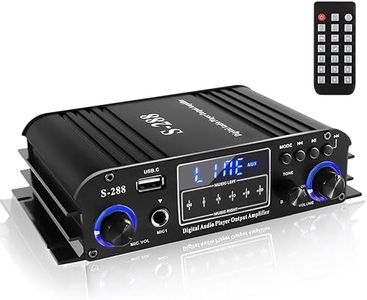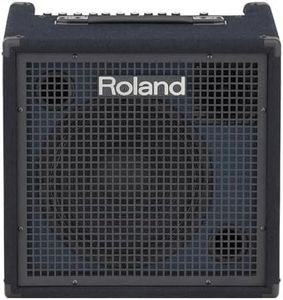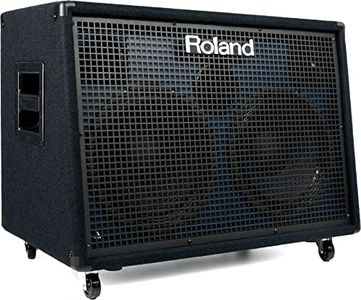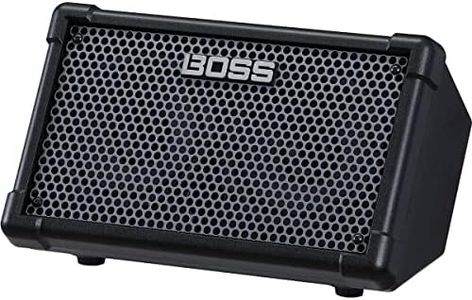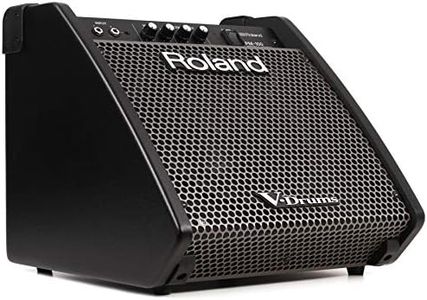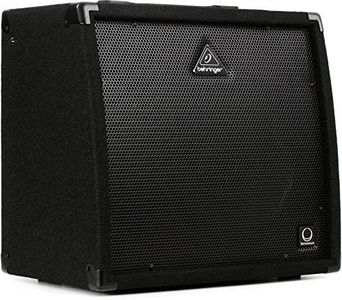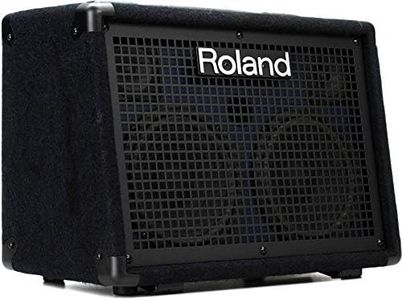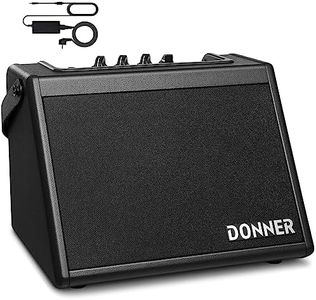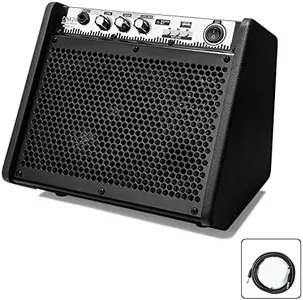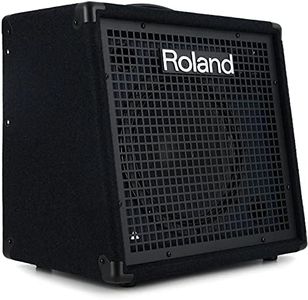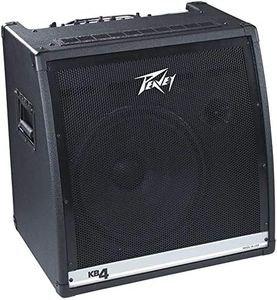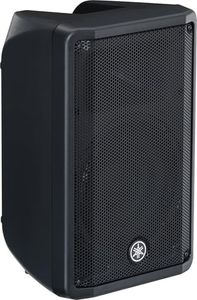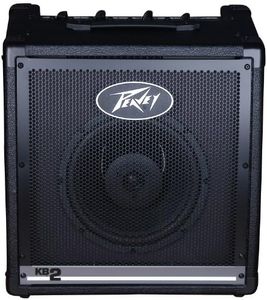10 Best Keyboard Amplifiers 2025 in the United States
Our technology thoroughly searches through the online shopping world, reviewing hundreds of sites. We then process and analyze this information, updating in real-time to bring you the latest top-rated products. This way, you always get the best and most current options available.

Our Top Picks
Winner
Roland KC-400 4 Channel Stereo Mixing Keyboard Amplifier, 150 Watt (KC-400)
Most important from
39 reviews
The Roland KC-400 is a robust option for keyboard players needing a reliable amplifier with considerable power. With 150 watts of output, this compact unit can manage both practice sessions and performances without compromising sound quality. The redesigned power amp and universal power supply offer improved stability and bass reproduction, while reducing weight—though at 54 pounds, it's not the lightest option around.
The speaker system is enhanced with a 12-inch woofer and horn tweeter, providing a balanced audio experience ideal for various musical styles. The onboard mixer is a highlight, featuring four stereo input channels and a stereo auxiliary input, which allows flexibility in sound management. The master EQ with a Shape switch further refines audio output, and the Output Select function on Channel 4 is useful for monitoring tracks. Connectivity is well-covered with XLR mic input, 1/4-inch line outputs, headphone output, and a sub output, all housed in durable metal jacks.
This amplifier supports stereo linking with another KC-400 for expanded inputs and full stereo sound, a valuable feature for more complex setups. However, it lacks built-in effects, which may be a drawback for musicians looking for additional sound modulation without external equipment. Potential buyers should weigh the benefits of its sound quality, connectivity, and mixing versatility against the absence of onboard effects and its moderate portability.
Most important from
39 reviews
Roland 4-channel Stereo Mixing Keyboard Amplifier, 320 watt (160W+160W) (KC-990)
Most important from
14 reviews
The Roland KC-990 is a powerful keyboard amplifier designed for serious musicians who need clear, rich sound and plenty of input options. With 320 watts of stereo power (160W per channel) and two custom 12-inch woofers plus horn tweeters, it delivers strong, full-range audio suitable for both practice and live performance. The built-in 4-channel mixer and master EQ let you fine-tune your sound easily, while the onboard effects like reverb, chorus, tremolo, and rotary add useful creative options without extra gear. It also supports external footswitches to control effects hands-free.
For connectivity, it offers a variety of inputs and outputs including XLR mic input, stereo XLR and ¼-inch line outputs, and a headphone jack, making it flexible for different setups. Portability is addressed with casters and side handles, though the amplifier is quite heavy at over 100 pounds, so it’s better suited for stationary use or careful transport. The metal jacks add durability, which is helpful for regular gigging.
This amp is ideal for keyboard players who want a reliable, high-quality sound system with multiple channels and effects built-in, but its size and weight might be a drawback if you need something very lightweight or compact.
Most important from
14 reviews
BOSS II Portable Street Performance Amp with Rich Stereo Sound, Next Generation of The Roland Series (Cube-ST2), Black
Most important from
67 reviews
The BOSS II Portable Street Performance Amp is designed mainly for street performers and mobile musicians who need a reliable, battery-powered amplifier with good sound quality on the go. It offers a total of 10 watts of power through two 6.5-inch speakers, delivering clear stereo sound that works well for both vocals and instruments. The amp includes two input channels, which means you can easily connect a microphone and an instrument without needing extra gear. It also comes with useful built-in effects like vocal harmony and a looper to enhance your performance, plus a simple equalization system to adjust your tone. Portability is a strong point here; though it weighs around 12.7 pounds, it's still manageable for travel and outdoor use, running on 8 AA batteries. For modern convenience, an optional Bluetooth adapter lets you stream music or control the amp wirelessly, and USB connectivity allows for recording or live streaming audio.
The 10-watt power output is modest, so it may not be loud enough for very large outdoor crowds or noisy environments. Also, since it runs on batteries, frequent use could get costly if you don't have rechargeable options. While the size of the speakers is decent for its class, some users looking for deeper bass or louder projection might find it limited. This amp is a solid choice for solo performers or small groups needing a compact, versatile, and easy-to-use amplifier for street gigs or small venues.
Most important from
67 reviews
Buying Guide for the Best Keyboard Amplifiers
Choosing the right keyboard amplifier is crucial for ensuring that your keyboard sounds its best, whether you're playing at home, in a studio, or on stage. A good keyboard amplifier will accurately reproduce the wide range of sounds that keyboards can produce, from deep bass notes to high-pitched melodies. When selecting a keyboard amplifier, consider the following key specifications to find the best fit for your needs.FAQ
Most Popular Categories Right Now
